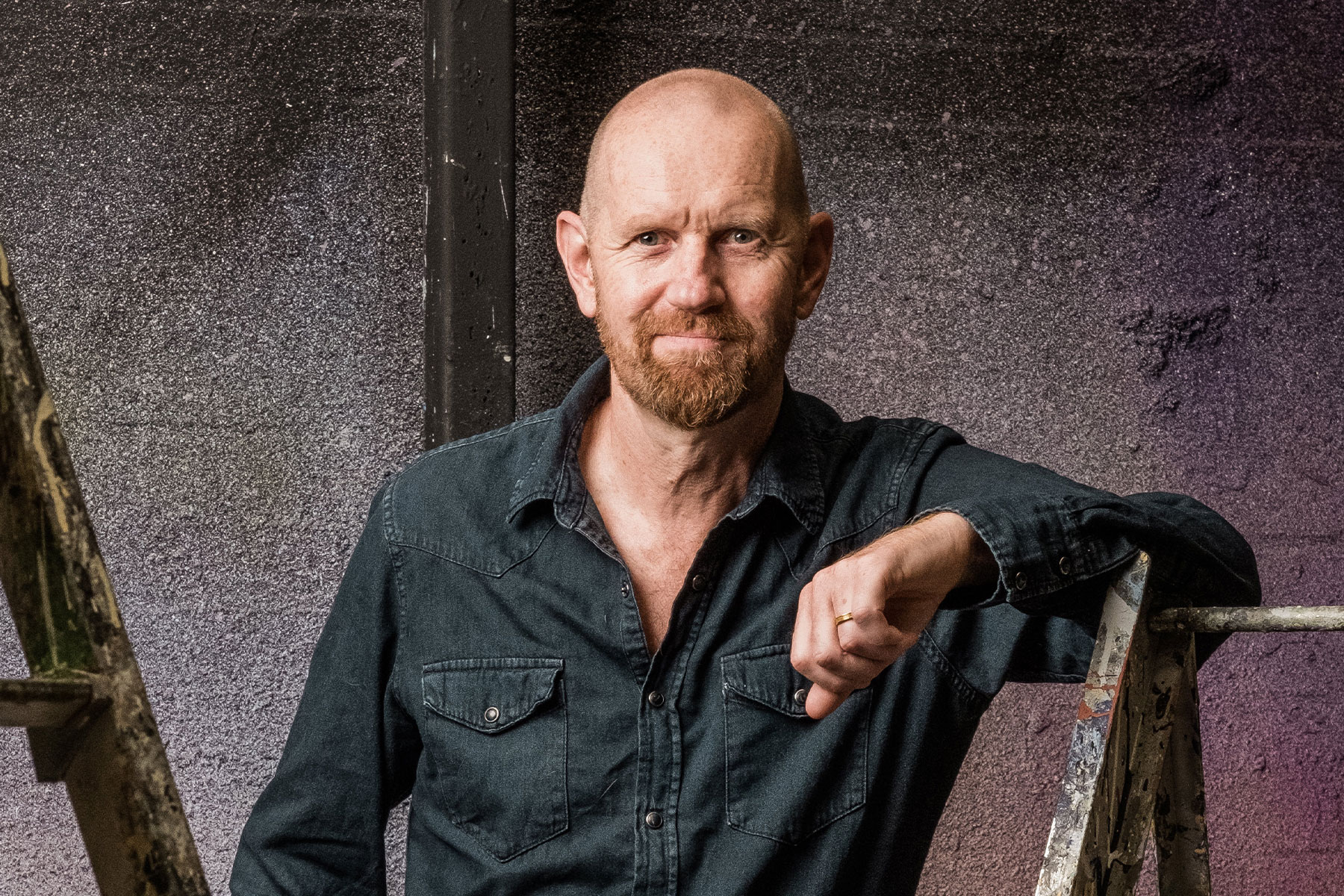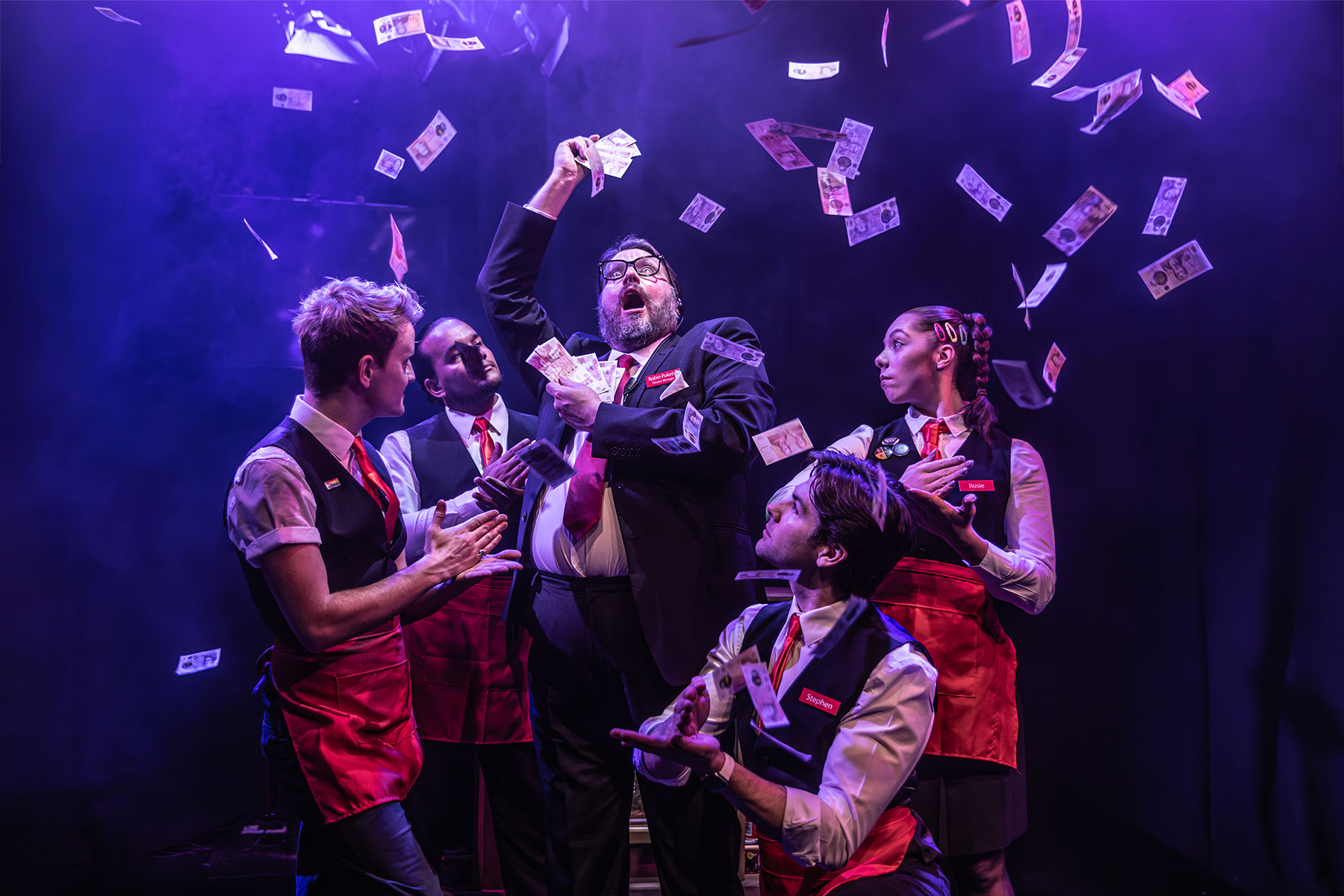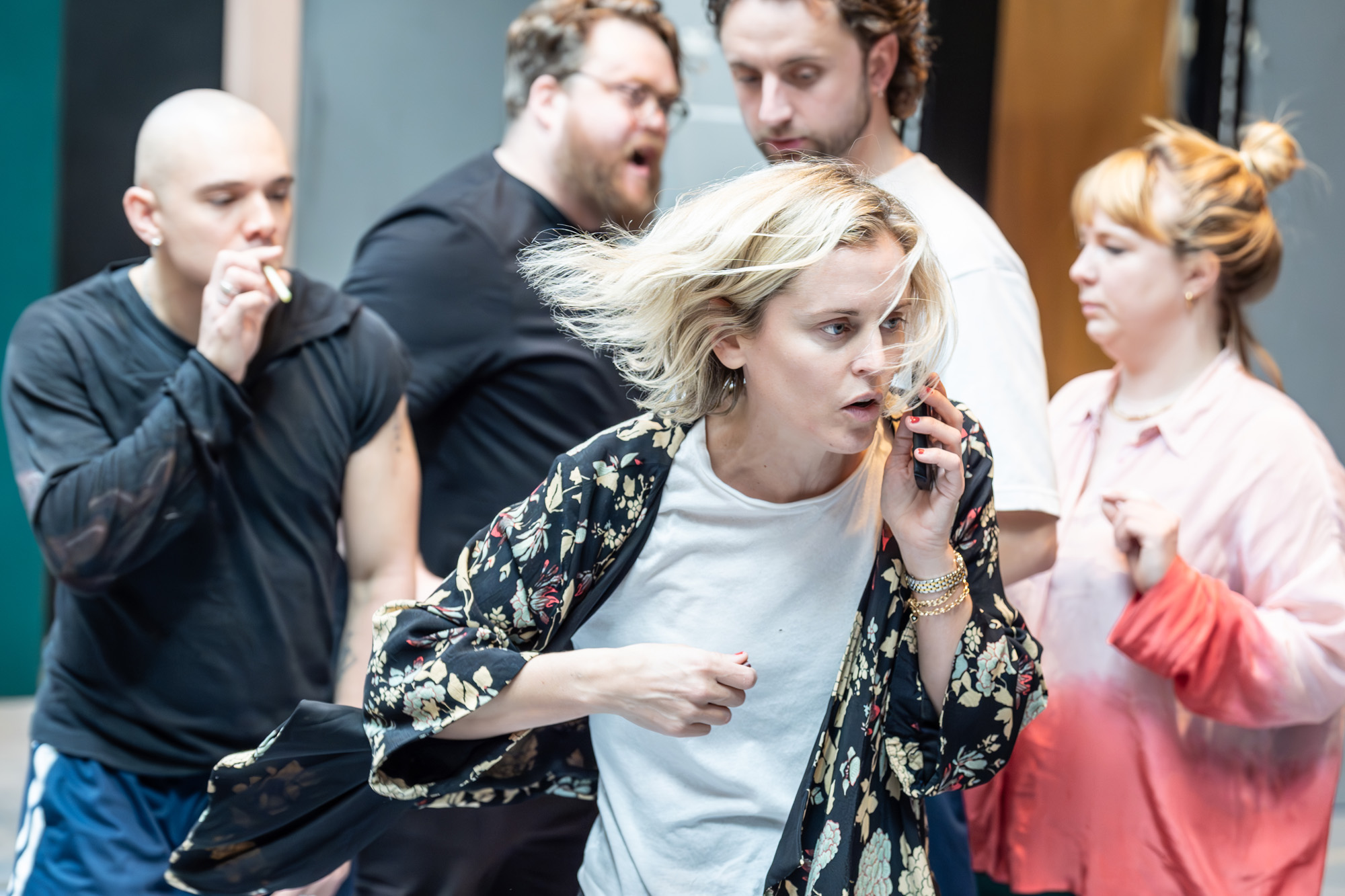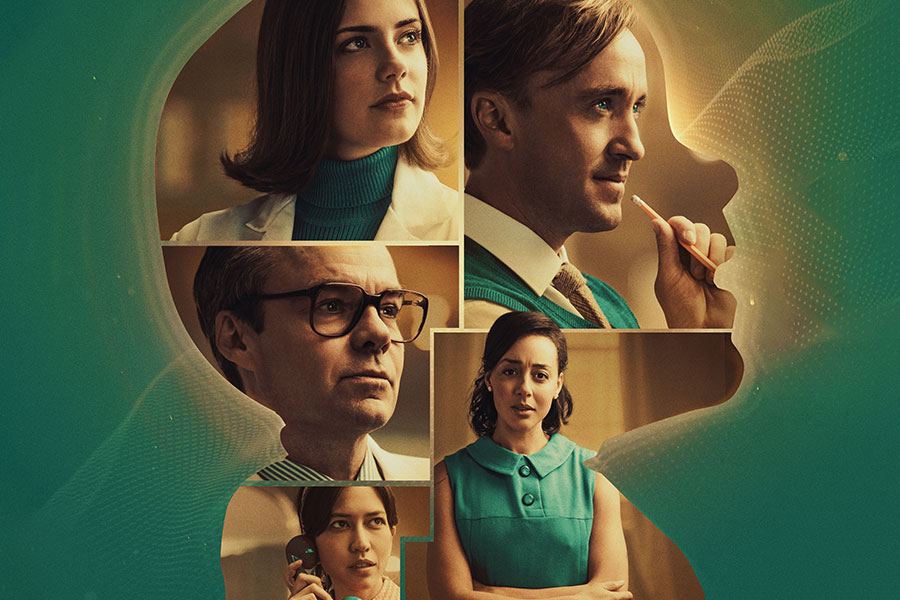Dreamboats and Petticoats (tour – Cambridge)
The story has a framing device, up in an attic where a modern teenager and her grandfather unearth his old electric guitar. That find precipitates the flash-back action, mainly in a church-run youth-club, but also in the characters’ homes and on their day-trip to Southend. They’re an eclectic bunch; a couple of prototype Essex girls, a clutch of school-friends who want to form a group (remember please that this is all in the days when we had groups and not bands to entertain us and set our bodies gyrating), two slight misfits and an imitation Elvis (without much talent). They are all respectful to their elders, if not to each other.
Not quite 16, Laura is a shy girl with glasses, a brace on her teeth and considerable musical talent. Straight out of drama school, Daisy Wood-Davis makes you feel for Laura as every one of her peers seem simply to make use of her and ignore her own needs. It’s a very fine performance, with lots of verve in her dancing and a winning way with her solos, particularly the quieter numbers in the second half.
The two lads attracted to her (in different ways) are shy Bobby (Scott Bruton) and brash Norman – what a name for a wannabe pop idol! – (Ben Freeman). Bruton has the repressed gangliness of Bobby absolutely right; when his father gives him the electric guitar he craves (but not an amplifier), his blend of glee and disappointment rings very true. Freeman makes Norman thoroughly objectionable with some nice touches as the character preens his way to his eventual comeuppance.
Laura’s brother Ray (AJ Dean) has a good line in superiority over his kid sister though, of course, she’s actually far more grown-up than he will ever be. Jennifer Vidal is Sue, a vamp in the making, and Emma Hatton plays Donna, her shadow. Both dance very well. Their several elders, who are definitely not always their betters, are taken by David Cardy and Mike Lloyd. Most of the total cast of 18 play instruments as well as taking individual parts.
Sean Cavanagh has designed a flexible set of several levels, decorated with Mark Howett‘s lights and revealing several surprises. The costumes are also good and nicely within period. This is important as Bob Tomson‘s production of the Laurence Marks and Maurice Gran script emphasises the moral and cultural attiudes of the Sixties (banking is a respectable occupation and buying on the never-never is only for idiots).
The musical director is Keith Strachan and his arrangements had the Cambridge Corn Exchange audience clapping along, tapping their feet and – at the end– getting up and dancing. It’s not a quiet show and personally I would have preferred a more subtle amplification so that the words as well as the tunes and the beat could make more of an impact. But overall the production values are high, the action swirls along with the music and the young cast never holds back.










